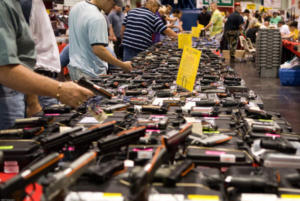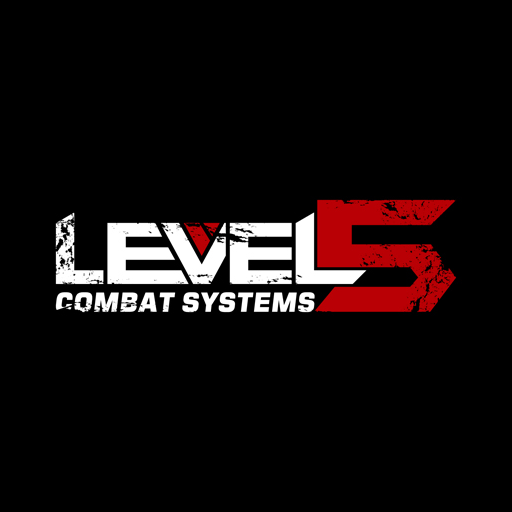What gun should I choose?
(originally posted to Targets & Tuners LLC)
This question has been asked many times and when I teach a class of new shooters I can almost guarantee someone will ask me that very question. Sometimes, well more often than not, someone will ask about Glock. It’s either my friend has one or it’s tacticool or something of that ilk. Sometimes they have one, but for some reason can’t hit the target with any consistency. I let them use one of my guns and (usually) amazingly they do better. Of course the next question is “Wow… what is this?” I tell them and they say “Hmmph, I like it.” Now it doesn’t matter what my gun is it could be one of many, but the point is they didn’t do any research. They know the Glock name and that is what they must have. My point is not don’t buy a Glock – they are fine guns and a lot of people love them. My point is: do your research and get educated.
So, how do we choose a firearm?
It comes down to a few things: budget, purpose, fit, physical ability, recoil management, aesthetics, warranty and recommendations. Well there is also one other thing… should you have a gun? Yes, in the US it is a Constitutional right, but just because you can, it doesn’t mean you necessarily should. There are a lot of things to consider – do you have kids, how will you store it, are you mature enough, will your past history prevent you from owning one legally, do you have a drug or alcohol problem, how are you… emotionally, do you accept the responsibility of owning a gun? This is just a small list of things to consider before we move on.
Budget
This is obvious. How much can you spend on the gun? You can get a gun for $100.00 or you can spend thousands. If your budget is $300.00 chances are you will be getting something different than if your budget was $1000.00. There are many guns out there in just about every price range. I have found the $400 – $600 range to work for most people. If you are a Sig Sauer or H&K fan that price goes up to $600 – $1200. Also part of budget is quality. Is the gun reliable? A less expensive gun may require more maintenance or replacement parts down the line. Just like a car, just because the initial price is less – how much time will it spend in the shop and does this change the cost? Also, this is a gun… if it doesn’t work when you most need it – what is it worth then?
Purpose
What are you using it for? Are you plinking, target shooting, shooting competitive pistol, home defense, carrying concealed? A home defense pistol may or may not be what you would carry concealed. Generally a carry gun is smaller, lighter and sometimes has a lower capacity than a full size gun. Why? Well because you are trying to hide it on your person and a full size gun tends to be bigger, heavier and harder to keep concealed, not to mention less comfortable. A plinking gun probably is not what you would shoot competitively.
Fit
How does it fit your hand? In concealed land how does it fit when you carry it – everyone’s body is different – a 1911 may not be very concealable on person A, but for person B it works just fine. Just as everyone’s body is different, including their hand, guns are different as well. You have your full size, sub-compacts, pocket pistols, revolvers and they all fit differently. Then of course there is brand – which again, of course, all fit differently as well. A Smith & Wesson feels very different than a Glock or a Colt 1911. You need to find which is comfortable. Also part of fit is – does your finger (the correct part of your finger) reach the trigger? This is called trigger reach. Your finger should meet the trigger in the middle of the pad of your index finger between the tip and the first joint. If you have too much finger on the trigger you will push it one way when squeezing the trigger and if you have too little, it gets pulled the other way. Next – are you right handed or left handed? Let’s actually reclassify that – do you shoot right or left handed. I am right handed, but shoot left handed as I am left eye dominant. There are a few left handed pistols and revolvers out there, many are somewhat ambidextrous – although not completely. There may be a magazine release on both sides (or switchable) but usually the slide lock release is built for righties. The same goes for revolvers – where is the cylinder release and what side does it open to? So how do you know what fits? Go to a gun store or range and pick up a bunch of them – see what feels best. If you go to a range that rents guns this is the best, as you can actually test fire some to see how it feels.
Physical ability
Can you operate the gun? Somewhere between fit and recoil management is physical ability. Do you have the physical ability to use a semi-auto pistol or is a revolver more your thing? It takes a certain amount of strength to operate a semi-auto as you have to pull the slide back against a spring that is pushing it the other way. The larger the caliber, the harder it is to charge the firearm (generally). The same goes for the slide lock release – it takes strength to operate the lever. Same thing with disassembly. Revolvers have fewer parts to take apart – usually none that are user serviceable. You don’t have to operate a slide lock release or the slide on a revolver either.
Recoil management
This is how you handle the firearm between shots. A 22 will have a much different feel than a 44 Magnum. I realize this gets into the ever popular caliber debate. My answer to that is find what fits and what you can place multiple shots on target, it is always better than nothing. I can have a 50 S&W and not hit anything, what good did it do for me? Different shooters can handle different guns – that is the way it is. I would not give a new shooter a 44 or 357 on their first time out. Personally, I start most people with a 9mm and see how they handle that and adjust from there. Some people I start with a 22, especially those who are scared. Find what you can handle. And by that, I don’t mean can you shoot it once? I mean can you get multiple shots on target in somewhat rapid succession.
Aesthetics
Do you like the looks of it? While it is never on anyone’s list it is certainly a part of the decision. If you don’t like the looks of it – will you buy it? Guns come in shiny nickel, matte stainless, blued steel, black polymer, pink, blue, purple, camo, zombie logos, etc. What do you like? Do you like the “lines” of the gun? A Walther PPK looks very different than a Springfield XD – which do you like?
Warranty
What happens if it breaks? This is pretty self-explanatory. A good number of guns come with a lifetime warranty. Will you be more likely to purchase one with a lifetime warranty over one with a 1 year warranty? If the gun only has a 1 year warranty – why is that? I know my experience with cars is once the warranty is expired – things happen.
Recommendations
This encompasses reliability and what other people tell you. Speak to knowledgeable shooters or gun shop employees – they hear stories and know what comes back for repairs. There are some guns I would not own just from talking to people about them. Manufacturers’ websites are not going to tell you about the issues people have with them, of course not. Their product is the next big thing. Read reviews, talk to shooters, go to gun shows. See how many used guns of a certain type are there – if lots of people are getting rid of them does that say something?
People like what they like for any number of reasons – just find the one that works best for you. I would be happy to work with you to find what works for you. You can sign up for one of our classes at Level 5 Combat Systems and learn more.
– Chris Love



